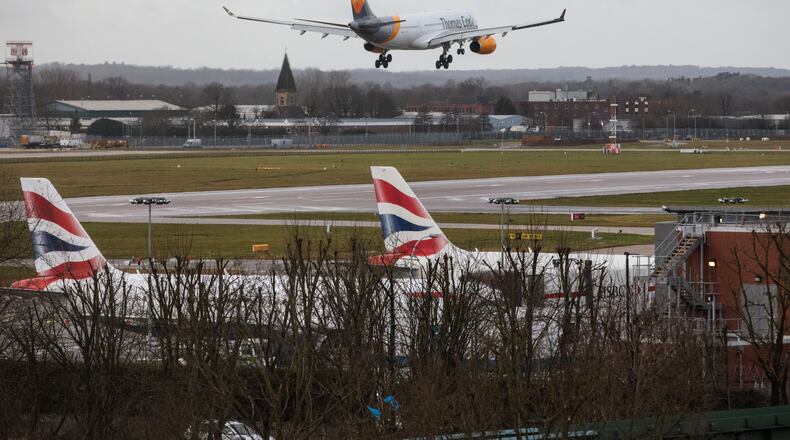More than 40 flights were delayed while others were left circling aloft.
That event followed interrupted service at London’s Gatwick Airport at the height of December’s Christmas-season traffic.
The Federal Aviation Administration says it receives more than 100 drone-sighting reports monthly.
The most recent quarterly drone incidents report available on the FAA web site — covering reports from April to June 2018 — tracks more than 780 reports of sightings or issues nationally.
On June 24, 2018, above Bluffton, Ohio, a Piper PA-32 pilot reported seeing a drone passing 200 feet below his plane at 8,000 feet.
“Wow, that was close. A drone larger than one foot in diameter passed just below us about 200 feet, black in color,” the pilot reported, according to the FAA report.
On the same day in the Cleveland area, another pilot reported a hovering, stationary drone about 100 feet below the aircraft. That drone was 800 feet high, the report said.
On June 6, near Huntington, W. Va., another drone was stationary about 3,000 feet above the Ohio River, a pilot reported.
According to Popular Mechanics magazine, a European drone hobbyist apparently flew a DJI Phantom 2 to a record 11,000 feet up in 2016, taking about three-and-a-half minutes to reach that altitude.
The operator of that drone most likely had to disable software controlling altitude restrictions on the vehicle, the magazine said, adding that in Europe, the regulated limit is 500 feet, while in the U.S., it’s 400 feet.
The University of Dayton Research Institute (UDRI) has performed some limited research on drone-aircraft damage.
In October, a manufacturer of small drones asked UDRI to withdraw what it called an “alarmist video” and blog post showing what the manufacturer argued was an impossibly unrealistic collision of a small drone and a light propeller-driven airplane.
In a blog post on the research, UDRI said researchers launched a 2.1-pound DJI Phantom 2 quadcopter at the wing of a Mooney M20 aircraft.
“The drone did not shatter on impact, but tore open the leading edge of the wing as it bore into the structure, damaging its main spar,” UDRI said.
“Drones are similar in weight to some birds, and so we’ve watched with growing concern as reports of near collisions have increased, and even more so after the collision last year between an Army Blackhawk helicopter and a hobby drone that the operator flew beyond his line of site,” Kevin Poormon, group leader for impact physics at UDRI, said in the September 2018 post.
Representatives of the institute and the university said no one could comment on the issue Thursday.
A message was left for an FAA representative.
About the Author

